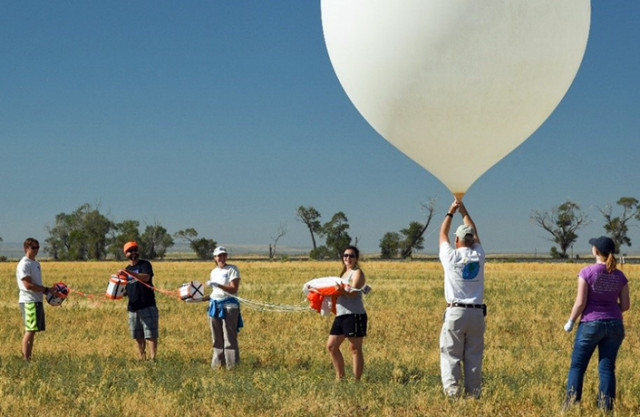When I first saw the headline on this I groaned a little, thinking this was some completely bogus type of project. But actually, upon reading about it in more detail it sounds like a really good public engagement project involving the eclipse, students, space, and microbes.
Plus, one of the key researchers featured in the article is Parag Vaishampayan from JPL, who does some interesting research on space and microbiology. The article linked above is worth a look.
From the article
In the moments when the moon starts to block the sun’s rays, scientists at the Jet Propulsion Lab in Pasadena will take part in a multi-school experiment aimed at figuring out if a bacteria from Earth might live on, thrive and potentially befoul Mars. They’ll release 57 camera-equipped balloons, to live stream the eclipse and the balloon’s journey from the ground to 30,000 kilometers into the stratosphere, and back to Earth.
And also
The balloons also will carry dog-tag sized plates covered with Paenibacillus xerothermodurans, a bacteria originally isolated from soil at the Kennedy Space Center in Florida.
This bacteria, not the balloon’s flight or the cameras, is the true center of the eclipse-oriented test.
An eclipse, the scientists believe, is the moment when conditions on earth come close to replicating conditions (certain sun rays are blocked, temperatures drop, etc.) on Mars. By measuring how the bacteria changes during the eclipse — does it grow? does it die? is the bacteria’s DNA altered? — scientists will sort out if the bacteria could, in fact, live on Mars or possibly some other planet or moon.
In short, scientists hope to learn something they couldn’t if the eclipse didn’t happen.
“We have exposed bugs on the stratosphere, we have gotten the data. But this data will be spatially distributed across the U.S. using the same technique. It’s just amazing,” said Parag Vaishampayan, a JPL scientist working on the Eclipse Ballooning Project who specializes in the once imaginative idea known as planetary protection.

One thought on “Eclipse brings out a cool citizen microbiology project”